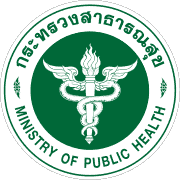303.90 Alcohol Dependence
*The criteria used for alcohol dependence are the same as those used for all substances*
Criteria for Substance Dependence:
Recurrently problematic and frequent substance use, which leads to clinical and serious impairment or distress. Three or more of the following must occur within a 12 month period as a result of substance use.
- Tolerance, as described by the following criteria:
-
- The need for more and more of the amount of the substance in order to become intoxicated or achieve the desired effects.
- Noticeable decrease in the effectiveness of the substance when the same amount is used.
- Withdrawal, as described by the following criteria:
-
- Typical withdrawal symptoms for the particular substance (see alcohol withdrawal below on page 2).
- Substance is taken (or one that is similar) in order to avoid or relieve negative symptoms associated with nonuse of the substance.
- The substance is used in greater amounts and for a longer period time than was originally intended.
- A firm desire to reduce or control the amount of substance use, possibly with many unsuccessful attempts to do so.
- A lot of time is spent in obtaining and using the substance, as well as in recovering from its effects (e.g., going out of town to go on a bender, chain-smoking, working extra hours to earn money to buy the substance, days spent recovering from a bender, etc.).
- Substance use significantly interferes with social, occupational, or recreational activities.
- Substance is still used even when one has knowledge that the substance use was the likely cause of a physical and/or psychological problem(s), or when one has knowledge that substance use exacerbated a physical and/or psychological problem(s) (e.g., continued drinking despite cirrhosis of the liver.)
Specifiers:
With Physiological Dependence: evidence of tolerance and/or withdrawal
Without Physiological Dependence: no evidence of either tolerance or withdrawal
Course Specifiers:
Early Full Remission: When criteria of substance abuse or dependence is no longer met for at least one month, but less than 12 months.
Early Partial Remission: When full criteria for substance abuse or dependence has not been met (but one or more criteria have) for at least one month, but less than 12 months.
Sustained Full Remission: No criteria for substance abuse or dependence have been met for at least 12 months.
Sustained Partial Remission: When full criteria for substance abuse or dependence has not been met (but one or more criteria have) for at least 12 months.
Other Specifiers:
On Agonist Therapy: For those using agonist medications to aid in recovery.
In a Controlled Environment: For those in an environment where access to substances is restricted and no criteria for substance abuse or dependence has been met for at least a month.
291.81 Alcohol Withdrawal
Criteria A: Abstinence (or reduction) from alcohol use
Criteria B: Two or more of the following symptoms, starting within several hours to a few days after one has cut down or stopped consuming alcohol.
- autonomic hyperactivity
- increased hand tremor
- insomnia
- nausea or vomiting
- transient visual, tactile, or auditory hallucinations or illusions
- psychomotor agitation
- anxiety
- grand mal seizure
Criteria C: The above symptoms cause significant problems in social, occupation, and/or other areas of functioning.
Criteria D: The above symptoms are not a result of a medical condition or another mental disorder.
Specifiers:
With Perceptual Disturbances: Used when hallucinations occur, but the individual is aware that they are caused by alcohol withdrawal (termed, intact reality testing). When the individual is not aware that the hallucinations are the result of withdrawal, a diagnosis of Substance-Induced Psychotic Disorder, With Hallucinations may be given.
American Psychiatric Association. (2000). Diagnostic and Statistical Manual of Mental Disorders: DSM-IV-TR (4th ed. tr.). Arlington: Amer. Psychiatric Assn.
Additional Notes
- There are more English synonyms for “drunk” than any other word.
- Arabs were the first to distill alcohol in 600 A.D.
- 1990 per capita consumption of alcoholic drinks in the U.S. was 39.5 gallons
- Alcohol is the most serious drug problem for all industrialized nations
- Alcoholism is a illness of normal people
- The typical alcohol is in his or her mid-thirties and has a good job, home, and family (i.e., not a “bum”)
- Mortality rates are twice as high for male alcoholics and three times as high for females alcoholics than their nonalcoholic counterparts
- Half of all hospital admissions, homicides, and car accidents are alcohol related
- A quarter of all suicides involve alcohol
- Alcoholism plays a major role in 20% of all divorces
- 1 out of 10 U.S. adults is an alcoholic (14 million total)
- Men are three times more likely than women to become alcoholics
- A quarter of alcoholics developed alcoholism before they were 20
- A family history of alcoholism puts one at a much greater risk of alcoholism (i.e., there appears to be a very strong genetic component to alcoholism)
- The DSM-IV list 13 mental disorders associated with alcohol
- Alcoholics typically suffer from apprehension, agitation, dysphoria, guilt, remorse, despair, hopelessness, futility, self-deprecation, and insomnia
Maxem, J. S., & Ward, N. G. (1995). Essential Psychopathology and its Treatment. (2nd.). New York: W.W. Norton and Company.


